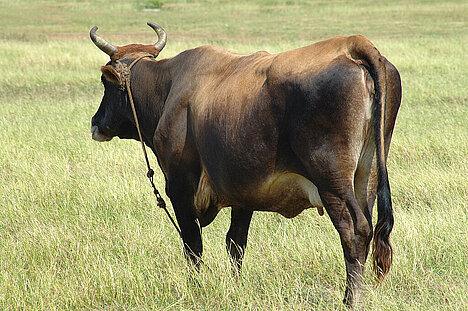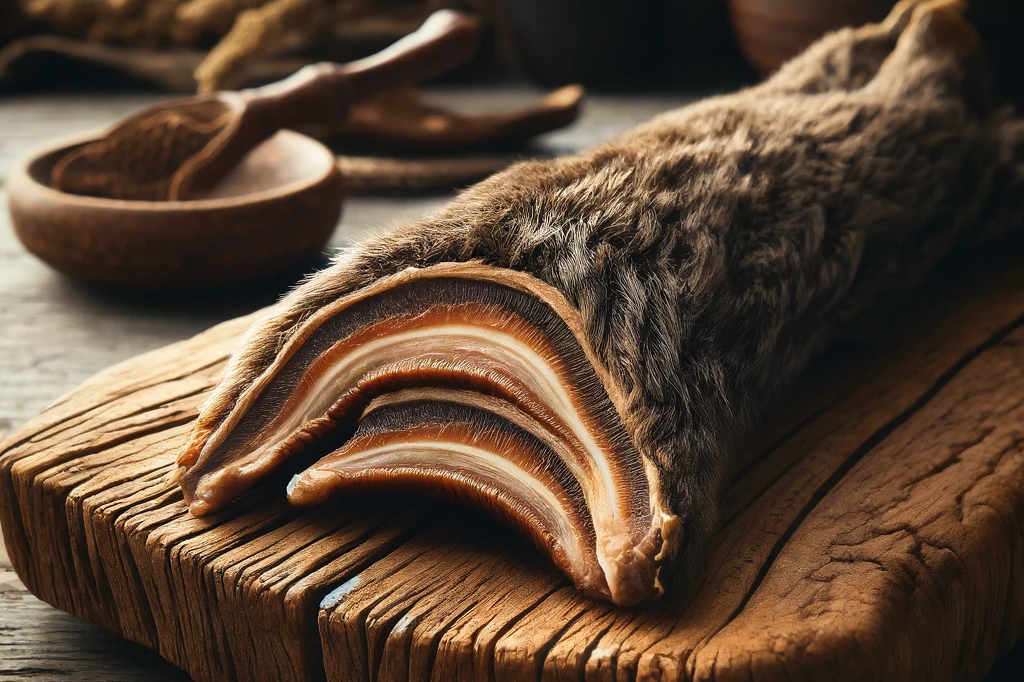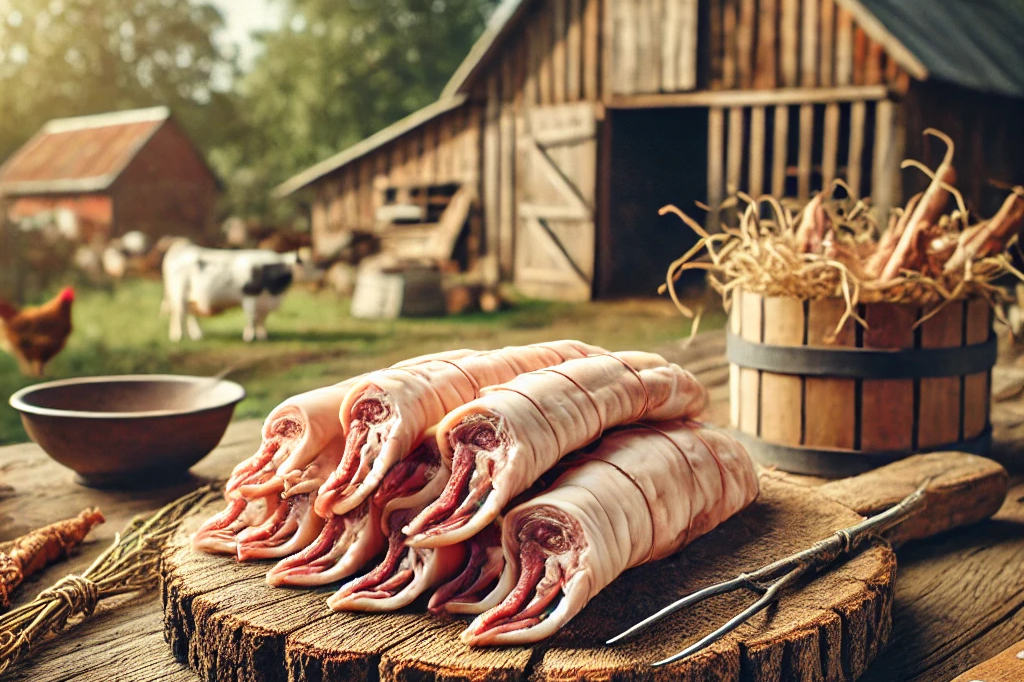Cattle rod

Beef jerky is a popular chew for dogs that consists of dried beef hide. Many dog owners value beef jerky as a natural and tasty alternative to artificial chews. But what exactly is beef jerky and what advantages and disadvantages does it have for your dog? In this article, you will learn everything you need to know about beef jerky for dogs.
What is beef rind?
Beef rind is a part of the hide of cattle that comes from the tail. The hide is cleaned, dried and cut or twisted into pieces. This produces long or short chewing rolls, which can vary in thickness or thinness depending on the manufacturer. Beef jerky is usually natural and contains no additives such as colorants or preservatives. It is rich in protein and collagen, but also in fat and calories.
What are the benefits of beef jerky for dogs?
Beef jerky has several benefits for dogs that make it a popular chew. For one, beef jerky promotes your dog's dental health by reducing tartar and plaque and massaging the gums. On the other hand, beef jerky provides a meaningful activity for your dog that satisfies his chewing instinct and keeps him mentally challenged. Beef jerky can also help your dog's digestion by stimulating the intestinal flora and preventing constipation.
What are the disadvantages of beef jerky for dogs?
However, beef jerky also has some disadvantages for dogs that you should be aware of. On the one hand, beef jerky can trigger allergies or intolerances if your dog is sensitive to beef products. Secondly, beef jerky can lead to obesity or diarrhea if your dog eats too much of it or does not digest it well. There is also a risk of your dog choking on beef jerky or pieces getting stuck in the gastrointestinal tract, which can lead to vomiting or intestinal obstruction.
How do you feed beef jerky correctly?
To make the most of the benefits of beef jerky for your dog and avoid the disadvantages, you should follow a few tips. Firstly, you should always pay attention to the quality and origin of the beef jerky and only buy products from trustworthy suppliers. Secondly, you should always choose the right size and thickness of cattle prod for your dog and make sure that it does not splinter or break. You should also always adjust the amount of beef jerky to your dog's needs and use it as a treat or reward, not as a main food. Finally, you should always watch your dog chew and provide him with plenty of water.
If you notice any signs of hypersensitivity or poisoning in your dog, you should see your vet immediately. We are not a substitute for a vet, but we try to be as accurate as possible. Every dog reacts differently and we recommend you get a second opinion or consult your vet if in doubt.
Stay healthy and take good care of your four-legged friend!😊
Similar to Cattle rod
Buffalo tail is a part of the tail of buffalo, which live mainly in Asia, Africa and North America. Buffalo are large, strong animals that belong to the cattle family. Their tails are long and bushy...
Lamb's tail is the tail of a lamb, which is usually cut off before the animal is slaughtered. It consists of cartilage, bone, fat and skin and is around 10 to 15 centimetres long. Lamb tail is rich...
Sheep's tail is the tail of a sheep, which is usually dried or smoked to preserve it. It consists of cartilage, bone, fat and fur and has an intense smell and taste that attracts many dogs. Sheep's...
Pork tail is the tail of a pig that can be used as food or animal feed. It consists of meat, fat, cartilage and bones and has a curved shape. Pork tails can be bought fresh, smoked or pickled, and...



